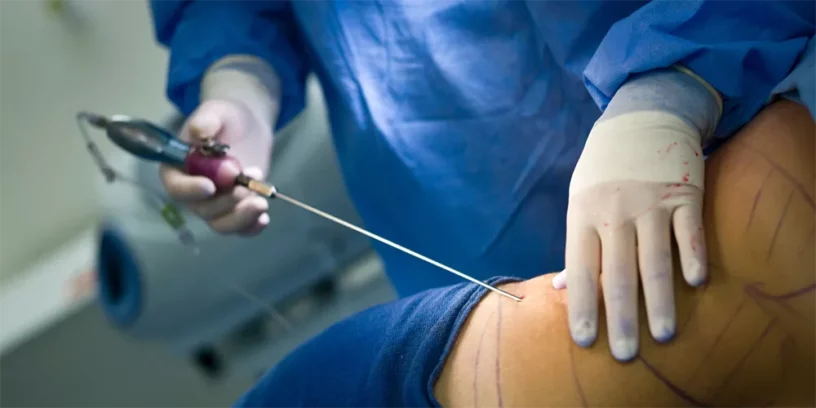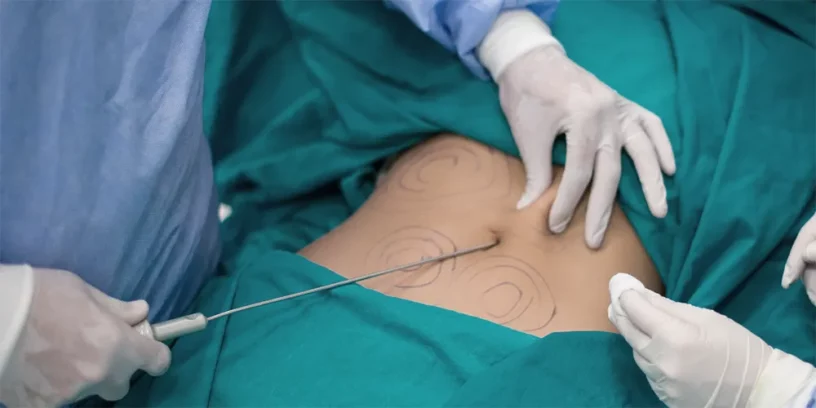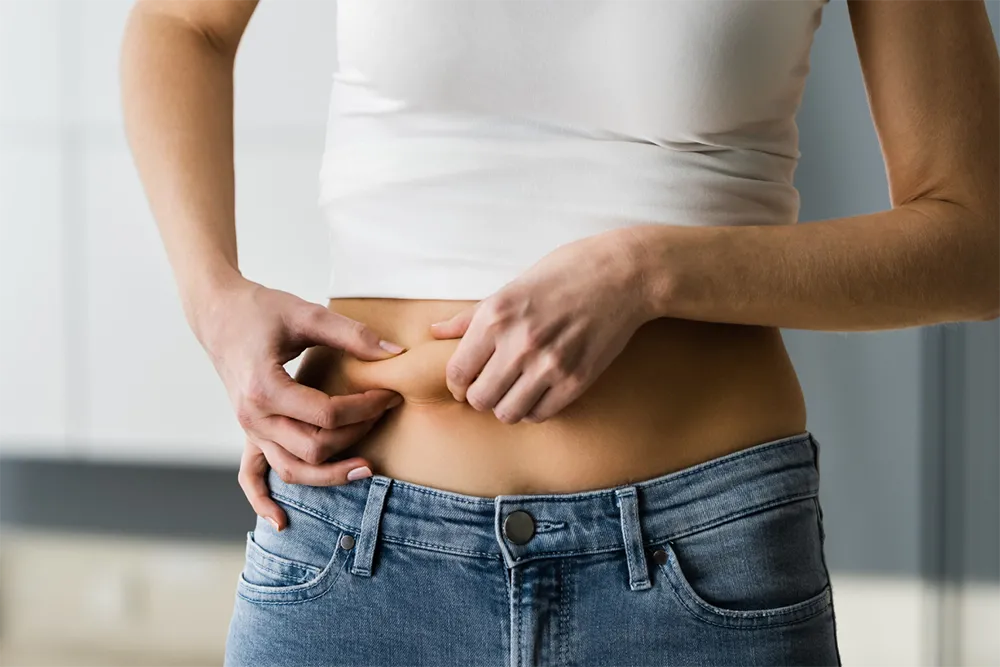Liposuction is a highly popular aesthetic procedure that offers many benefits to patients wishing to get rid of stubborn fat and improve their figure. By removing localized fat deposits from various parts of the body, liposuction offers patients an effective solution for reshaping their appearance and regaining their self-confidence. With this procedure, recalcitrant areas that resist diet and exercise can be treated, with generally rapid recovery and long-lasting results.
However, it is important to demystify certain aspects and misunderstandings surrounding this procedure, in order to provide accurate information and help patients make informed decisions.
What is liposuction?
Definition and objectives
Liposuction, also known as liposuction, is a surgical procedure designed to eliminate localized fat deposits in various parts of the body. This aesthetic procedure helps to sculpt and enhance the figure by removing excess fat that resists diet and exercise. It’s important to note that liposuction is not designed to be a weight-loss solution, but rather a method for refining and reshaping specific areas of the body.

The different liposuction techniques
Several liposuction techniques are available to meet patients’ specific needs and deliver optimal results. The most common techniques include :

Traditional liposuction This method involves the use of a cannula (a thin, hollow tube with one or more openings) which is inserted into the fat layer through small incisions. The surgeon then moves the cannula to break up and aspirate the fat. This is the technique used in the vast majority of cases.
Vibration Assisted Liposuction (LAV) or Power Assisted Liposuction (PAL)
This advanced liposuction technique uses mechanical vibrations to help eliminate fat cells. This method is designed to improve the precision and effectiveness of traditional liposuction. This process involves inserting a special cannula equipped with a vibration mechanism through small incisions made in the treatment area. The rapid vibrations of the cannula help to break up fat cells and dislodge them more easily from the surrounding tissue. The liquefied fat is then sucked out of the body using a suction device. Vibration-assisted liposuction can be particularly effective for treating areas of the body where fat is denser or more fibrous, such as the back or male chest.
Water jet liposuction
This technique involves injecting a solution of water and medication into the area to be treated, to facilitate the detachment and aspiration of fat cells.
Liposuction combined with BodyTite BodyTite is a radiofrequency technology combined with liposuction (RFAL) that tightens the skin while eliminating fat cells. When combined with liposuction, this method offers not only fat reduction, but also a significant improvement in skin sagging. The BodyTite procedure uses a special device that emits radiofrequency waves to heat subcutaneous tissue and stimulate collagen production, helping to firm and tone the skin. This technique is particularly beneficial for people with sagging skin, in addition to localized fat deposits. The combination of liposuction and BodyTite can thus offer more complete and harmonious results for the patient.
Ideal candidates for liposuction
Ideal candidates for liposuction are generally people in good health, with a stable weight and close to their ideal weight. They have localized areas of fat that resist diet and exercise. It’s also preferable for candidates to have elastic, firm skin, as this contributes to better aesthetic results. Finally, it is important that candidates have realistic expectations regarding the results and limitations of liposuction.

Common myths about liposuction
Myth 1: Liposuction is a weight-loss solution
Fact: Liposuction is primarily aimed at eliminating localized fat and sculpting the body, rather than achieving significant weight loss. Although some patients may experience a slight reduction in weight after the procedure, liposuction is not designed to replace a balanced diet and regular exercise program. Patients wishing to lose weight must first adopt a healthy lifestyle before considering liposuction to treat recalcitrant areas.
Myth 2: Liposuction guarantees smooth, blemish-free skin
Fact: Liposuction can improve skin appearance by removing excess fat, but it doesn’t necessarily guarantee perfectly smooth skin. Skin elasticity and its ability to retract after fat removal, as well as other factors such as age, medical history and smoking, influence results. Some liposuction techniques, such as liposuction combined with BodyTite, can help tighten the skin, but it’s important to have realistic expectations about skin quality after the procedure.
Myth 3: Liposuction results are permanent
Fact: It’s true that fat cells removed during liposuction don’t return, but that doesn’t mean the results are permanent. If a patient adopts an unhealthy lifestyle after the procedure, he or she may regain weight by allowing the remaining fat cells to “restock”, which will affect the results obtained. To maintain the effects of liposuction, a balanced diet and regular exercise are essential.
Myth 4: Liposuction is risk-free
Fact: Like any surgical procedure, liposuction involves risks and possible complications. The most common complications include infection, bleeding, skin irregularities, reactions to anesthesia and problems related to healing. However, choosing a qualified and experienced surgeon, and carefully following post-operative instructions, can significantly reduce these risks. It’s important to discuss potential risks with your surgeon during the initial consultation, and to carefully weigh the pros and cons before making a decision.
Things to consider before choosing liposuction
Realistic expectations
Before choosing liposuction, it’s crucial to understand the limitations of this procedure and to have realistic expectations regarding results. Although liposuction can significantly improve the figure and eliminate stubborn fat, it does not guarantee a perfect body or significant weight loss. Discuss your goals with your surgeon to ensure that liposuction is tailored to your needs and that your expectations are achievable.
Consultation with a qualified surgeon
Selecting an experienced, board-certified surgeon is essential to ensure the best possible results and minimize risks. During the consultation, be sure to ask questions about the surgeon’s experience, the techniques he or she uses, the expected results and the risks associated with the procedure. Don’t hesitate to ask for before and after photos to get an idea of the results you can expect.

Costs and financing of the procedure
Liposuction is generally considered to be a cosmetic procedure, which means that insurance or mutual insurance companies do not cover its costs. It’s important to take into account the cost of the procedure, clinic fees and anesthesia, as well as recovery expenses. Make sure this procedure is compatible with your budget.
The recovery period
Liposuction is a surgical procedure that requires a recovery period to allow the body to heal. Plan to take time off work and limit your physical activities for the first few weeks after surgery. Follow your surgeon’s post-operative instructions on wound care, pain management, compression garments and activities to avoid minimizing complications and ensure the best possible results.
Conclusion:
Liposuction is the aesthetic procedure of choice for patients seeking to eliminate stubborn fat and improve their figure. The benefits of this procedure include a noticeable transformation in appearance, a boost in self-confidence and long-lasting results, provided you maintain a healthy lifestyle. However, it is essential to understand the limits of liposuction and to have realistic expectations. By choosing a competent surgeon and taking into account all the important aspects, such as costs, risks and recovery period, patients can maximize the benefits of this cosmetic procedure. A thorough consultation with a cosmetic surgeon will help determine whether liposuction is the ideal solution for achieving your desired aesthetic goals, and ensure that the benefits outweigh any potential risks.

